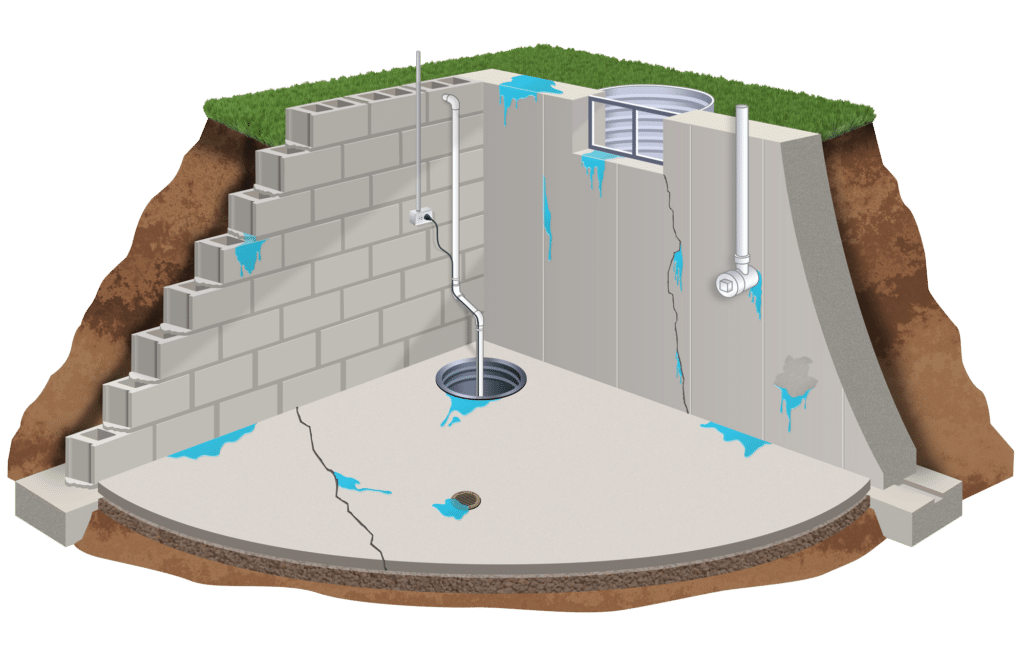Waterproofing is a vital aspect of house maintenance that often gets overlooked. Many homeowners fail to realize the importance of keeping their homes safe from water damage, which can lead to costly repairs and long-term structural issues. Grasping why waterproofing is important for all home and building is the initial step towards securing a safe and dry environment for your family. With the potential to save thousands in repairs, the benefits of waterproofing far outweigh the initial investment.
In this definitive guide to waterproofing, we will cover everything you need to know about safeguarding your house from water damage. Whether you're dealing with a dripping basement, a susceptible roof, or damp-prone areas like restrooms and kitchens, our guide will provide you with the insights you need to take action. From debunking popular waterproofing myths to spotting the signs that your home needs care, we have you taken care of. Let's plunge into the key strategies for waterproofing achievement and make your house a fortress against water.
Comprehending the Essential Nature of Water Resistance
Waterproofing is an integral aspect of property and building maintenance that often goes unnoticed. Without adequate waterproofing, a property is vulnerable to liquid damage, which can lead to structural complications, mildew development, and costly repairs. By adopting waterproofing solutions, property owners can protect their investments and enhance the overall durability of their structures.
One of the main reasons waterproofing is vital is the avoiding of liquid penetration. Whether it's through the foundation, ceiling, or sides, water can leak into a structure, causing damage that may not be immediately visible. By addressing these potential infiltration sites, owners can steer clear of significant costs related to repairs and renovations in the long run. Not only does waterproofing shield against current threats, but it also serves as a anticipatory measure against potential dangers.
Moreover, effective waterproofing adds to thermal efficiency in properties. When moisture is controlled, the likelihood of thermal inefficiency due to moisture is lessened, resulting in lower climate control expenses. Spending on waterproofing not only shields your property but also offers financial benefits through potential savings, making it an necessary consideration for any homeowner.
Crucial Moisture-Proofing Techniques and Approaches
Effective waterproofing begins with a thorough assessment of your home to spot susceptible areas. For basements, applying waterproof coatings and membranes on surfaces and floors can halt moisture seepage. Interior methods such as drainage systems and sump pumps aid manage water infiltration by redirecting it away from critical areas. Additionally, confirming that gutters and downspouts are operating well can reduce water accumulation near your foundation.
When dealing with roofs, choosing the appropriate waterproofing materials is crucial. Liquid waterproofing membranes are popular for flat roofs, as they provide a seamless barrier against leaks. For Check Out Your URL , opting for quality waterproofing coatings can defend against extreme weather and prolong the durability of roofing materials. Regular maintenance is key, including reviewing for cracks and verifying seals around vents and chimneys are secure.
Ultimately, waterproofing outdoor structures such as decks and patios requires dedicated techniques to improve durability. Utilizing sealants formulated for exterior surfaces can prevent water damage and improve durability. For balconies and terraces, proper drainage systems are necessary to stop water accumulating and following structural issues. By implementing these techniques, homeowners can ensure comprehensive protection from moisture-associated problems.
Formulating Well-informed Decisions: Do-It-Yourself vs. Professional Waterproofing
As you are choosing between the options of DIY and professional waterproofing, it is crucial to evaluate your skills, the difficulty of the project, and the potential risks entailed. DIY waterproofing can be inviting due to the reduced costs and the satisfaction of finishing a home improvement project. However, many homeowners misjudge the intricacies required in effectively waterproofing areas like basements or roofs. Errors made during a DIY project can result in greater issues down the line, which could costing higher in repairs than if a professional was employed from the beginning.
Alternatively, hiring a skilled waterproofing contractor guarantees that the job is completed correctly and efficiently. Professionals provide specialized knowledge, specialized tools, and the availability of high-quality materials that the average homeowner may not have. Moreover, they can detect latent issues that may not be immediately apparent to an inexperienced eye. This level of attention to detail can save homeowners time and money over the long term by preventing problems such as mold growth, structural damage, and possible health hazards from water intrusion.

At the end of the day, the choice between DIY and professional waterproofing should depend on your level of comfort with home improvement projects, the particular requirements of the waterproofing task at hand, and your budget. If the project is straightforward and you have the required skills, DIY may be the best option. On https://panduro-hirsch-2.federatedjournals.com/all-the-advantages-of-professional-waterproofing-solutions , for trickier challenges or if you are in doubt, investing in expert services is often the wiser choice, providing assurance and long-lasting results.
